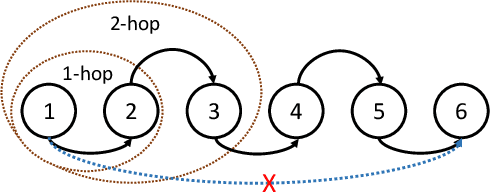Jingkai Siow
GraphSearchNet: Enhancing GNNs via Capturing Global Dependency for Semantic Code Search
Nov 04, 2021



Abstract:Code search aims to retrieve the relevant code fragments based on a natural language query to improve the software productivity and quality. However, automatic code search is challenging due to the semantic gap between the source code and the query. Most existing approaches mainly consider the sequential information for embedding, where the structure information behind the text is not fully considered. In this paper, we design a novel neural network framework, named GraphSearchNet, to enable an effective and accurate source code search by jointly learning rich semantics of both source code and queries. Specifically, we propose to encode both source code and queries into two graphs with Bidirectional GGNN to capture the local structure information of the graphs. Furthermore, we enhance BiGGNN by utilizing the effective multi-head attention to supplement the global dependency that BiGGNN missed. The extensive experiments on both Java and Python datasets illustrate that GraphSearchNet outperforms current state-of-the-art works by a significant margin.
Devign: Effective Vulnerability Identification by Learning Comprehensive Program Semantics via Graph Neural Networks
Sep 08, 2019



Abstract:Vulnerability identification is crucial to protect the software systems from attacks for cyber security. It is especially important to localize the vulnerable functions among the source code to facilitate the fix. However, it is a challenging and tedious process, and also requires specialized security expertise. Inspired by the work on manually-defined patterns of vulnerabilities from various code representation graphs and the recent advance on graph neural networks, we propose Devign, a general graph neural network based model for graph-level classification through learning on a rich set of code semantic representations. It includes a novel Conv module to efficiently extract useful features in the learned rich node representations for graph-level classification. The model is trained over manually labeled datasets built on 4 diversified large-scale open-source C projects that incorporate high complexity and variety of real source code instead of synthesis code used in previous works. The results of the extensive evaluation on the datasets demonstrate that Devign outperforms the state of the arts significantly with an average of 10.51% higher accuracy and 8.68\% F1 score, increases averagely 4.66% accuracy and 6.37% F1 by the Conv module.
 Add to Chrome
Add to Chrome Add to Firefox
Add to Firefox Add to Edge
Add to Edge